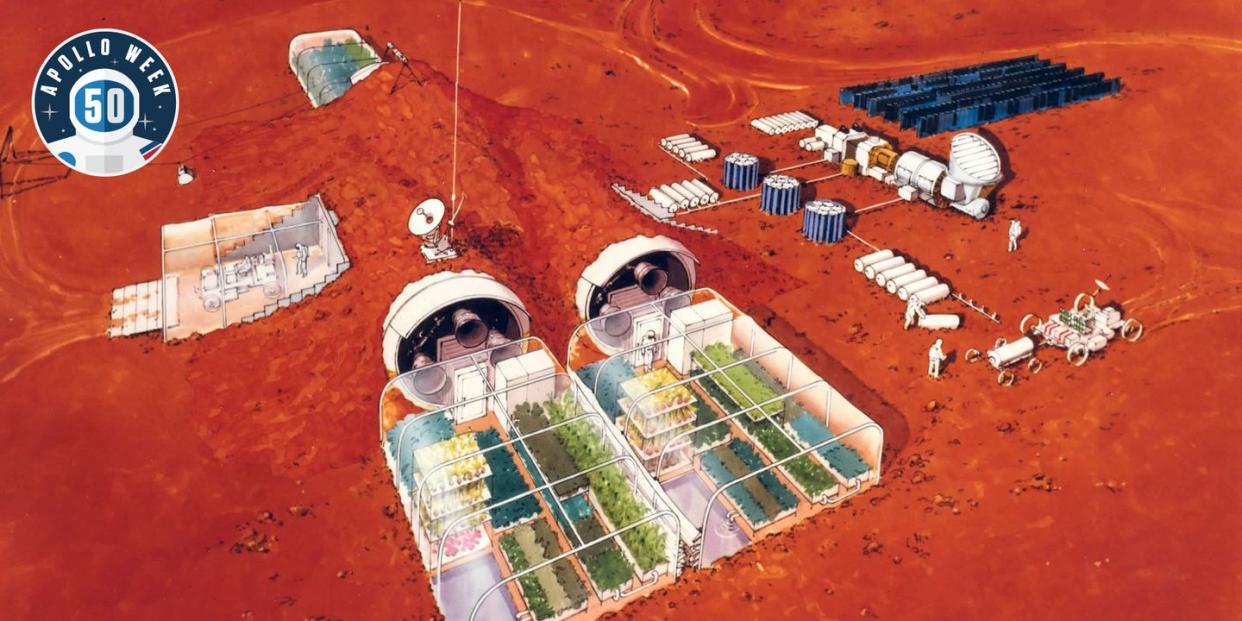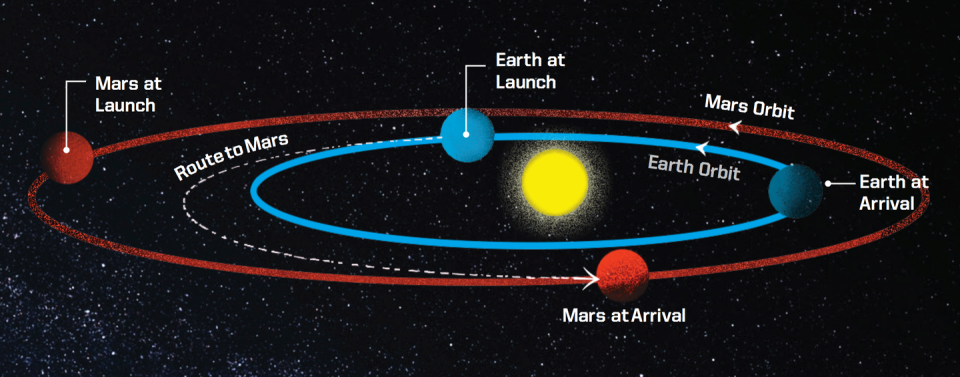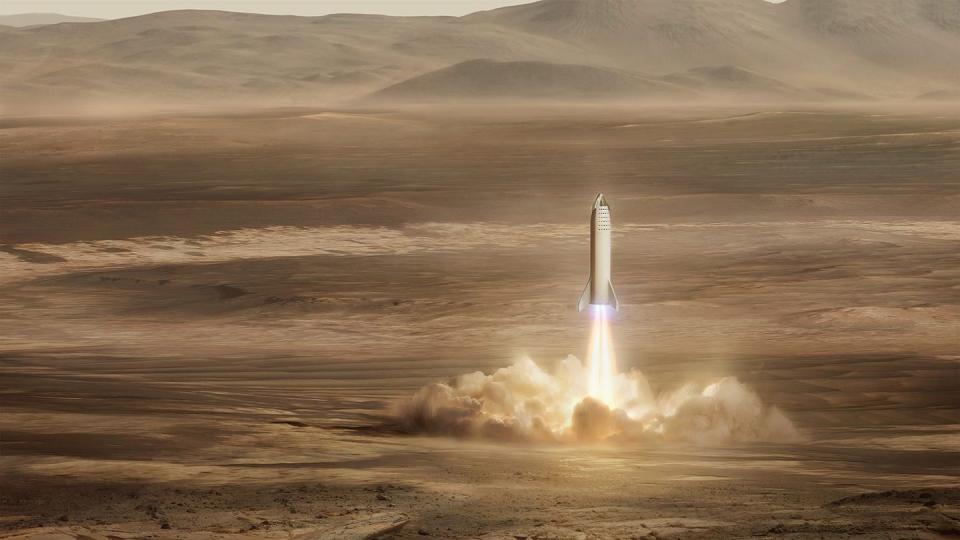6 Challenges We Need To Conquer on Our Way to Mars

Welcome to Apollo Week, celebrating 50 years since the Apollo 11 mission, explaining what it means today, and exploring how its legacy will shape the future of space exploration.
Our fascination with the Red Planet is understandable. Proving that humans can survive (and thrive) as an interplanetary species would completely change our society. But the challenges facing NASA—or any other outfit willing to make the long trek—are monumental.
These are the biggest hurdles that stand between us and Mars, and how the moon might be the perfect place to help prepare us for the Red Planet.

Challenge 1: The Orbit
You can’t just point and shoot. Do that and your spacecraft will miss Mars. So, rocket scientists use a maneuver called a Hohmann transfer orbit to send a vehicle from a small circular orbit (say, Earth’s) to a larger one (Mars’s). The transfer orbit must be timed precisely so that when the spacecraft leaves Earth it arrives at destination orbit at the same time Mars reaches the same position. Earth and Mars only come into the right orbital alignment for a Hohmann transfer once every 26 months to allow a survivable six-month journey with the use of available propulsion techniques.
How Going Back to the Moon Helps: It would be relatively easy for a Mars-bound vehicle to “stop by” Gateway at its very high orbit at a relatively low cost in terms of propellant and velocity change.
Challenge 2: The Long Away Mission
We’ll have to stay a while. Astronauts will need to remain on Mars or orbiting it for months at a time. A single Mars mission, from start to finish, would likely take more than two years. That’s a long while to be away from our home planet, breathing recycled air in the cramped quarters of a laboratory environment. And with a 40-minute lag between sending messages to Earth and receiving responses back, astronauts will need to make autonomous decisions. All of this will contribute to extreme feelings of alienation.
How Going Back to the Moon Helps: NASA hopes to learn how astronauts respond psychologically to living for extended periods on the moon. Scientists will also monitor the effects of microgravity and space radiation on astronauts’ bodies to develop solutions for longer Mars missions.
Challenge 3: Sending Supplies
Huge rockets will be needed to send big payloads. A Mars lander and the trans-Martian cruise vehicle will likely be built from payloads delivered into orbit by NASA’s mammoth Space Launch System (SLS) rocket and Orion spacecraft over several missions.
How Going Back to the Moon Helps: NASA will develop that deep-space capability by using the SLS and Orion vehicles to build the Gateway lunar orbiting platform and moon-based habitats.

Challenge 4: Sending More Supplies
Resupply isn’t an easy option. While astronauts at the International Space Station can receive fresh supplies within a few hours of a launch from Earth, Mars explorers might have to wait two years. That means enough food and fuel must be brought from home or made on Mars.
How Going Back to the Moon Helps: Our lunar base might be the proving ground for technologies that’ll produce propellant fuel from water ice mined beneath the surface of the moon, if, of course, the same technology can be adapted for Mars.
Challenge 5: A Better Space Station
We’ll need a more versatile space station. As NASA and its army of aerospace contractors complete work on SLS, a new, space-station-sized cruiser, known as Deep-Space Transport (DST) will have to be developed to shuttle crews between Earth and Mars.
How Going Back to the Moon Helps: Key systems for DST, such as radiation shielding and closed-loop life-support, will be flight proven on Gateway.
Challenge 6: Next-Gen Landers
There will be expected and unforeseen problems. The DST will only go to the orbit of Mars, which means that a large lander, capable of making soft touchdown on the Red Planet, would have to be built in space. NASA’s key contractor, Lockheed Martin, proposed a giant space plane, which would use the SLS rocket for launch from Earth. Then there is the newly emerged juggernaut of space business, SpaceX, which hopes to build the Big Falcon Rocket, BFR, to haul into Earth’s orbit a 150-ton trans-Martian cruiser with 40 crew cabins.
To escape the Earth’s gravity, the huge ship would need four refueling tankers and another refueling on Mars using a prebuilt propellant production plant.
How Going Back to the Moon Helps: NASA believes new moon missions will accelerate a mission to Mars by speeding up the development of technologies needed to get there. But even before NASA diverted from Mars to the moon, an independent study estimated that the first realistically achievable window for a crewed Mars mission would open in 2037.
This article appeared in the July/August 2019 issue of Popular Mechanics. You can subscribe here.
You Might Also Like

